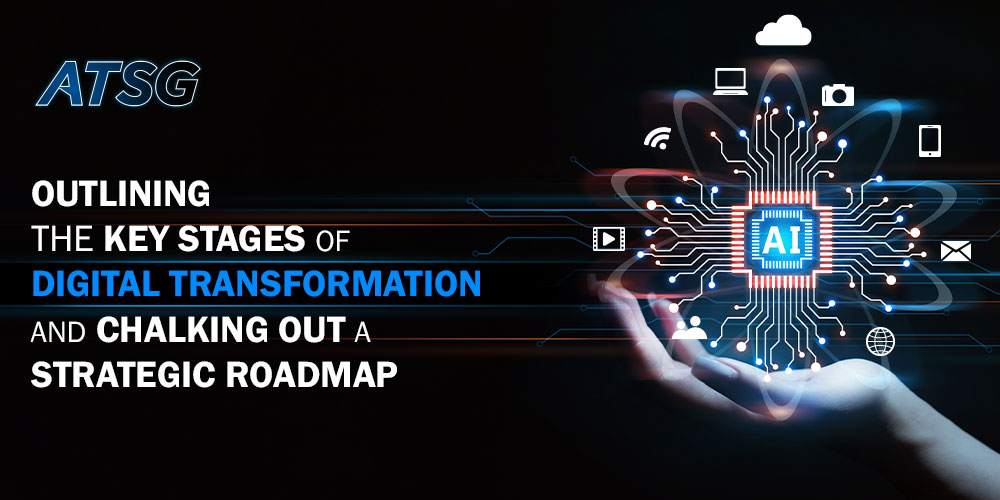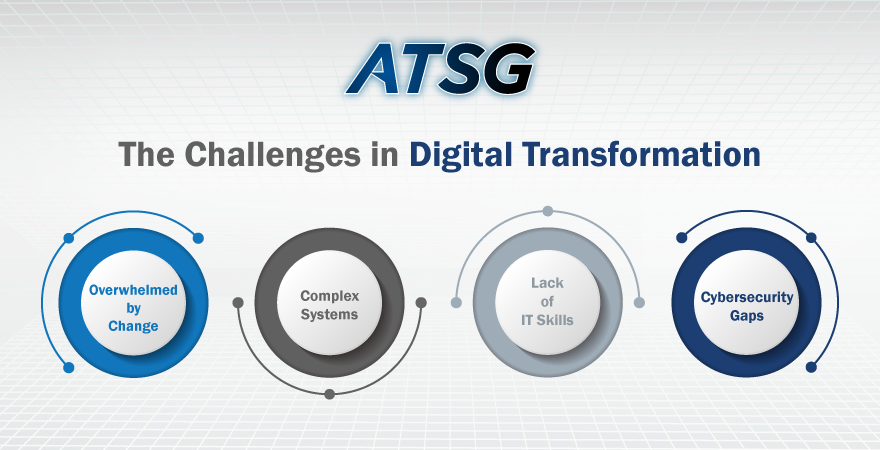The trends driving digital workplaces began way before the pandemic struck. The emergence of cloud services, software as a service (SaaS), artificial intelligence (AI), and Internet of Things (IoT) really accelerated digital transformation. The introduction to remote and distributed workforces is built upon the framework of a digitalized workplace.
Inevitably, digital transformation creates new processes, or changes the existing ones for the better. Digital transformation involves using self-optimizing marketing campaigns, using machine learning (ML) for effective employee recruitment, and automation of existing manual business processes.

Any company desirous of adopting technological transformation requires a roadmap to ensure an efficient and consistent approach, through-out the organization.
Defining Digital Transformation
It is the evolving pursuit of innovative and agile business and operational models, to create new value and experiences for customers, employees, and other key stakeholders. It is the re-envisioning of technology, business models, and processes to drive new ventures in an ever-changing digital economy. Every industry has its own take on transformation, but an objective view explores a consistent change and evolution across all domains of the organization.
The Key Stages of Digital Transformation
Business as Usual
This is the starting point for many organizations, as they begin to explore digital transformation. In other words, this represents the current state of the business, and its operations. The ultimate goal at this stage is to take advantage of digital technologies to innovate and achieve a work environment that can support growth, productivity, flexibility and efficiency.
Present and Active
In this phase, organizations should assess their current operating model, and develop a plan for initiating the digital transformation. Additionally, businesses evaluate which departments or employees have transitioned from manual or paper-based processes, to digital systems and automated workflows. This helps organizations gain a better understanding of their digital maturity levels, and develop a roadmap for further stages.
Formalized
The formalized stage marks a pivotal moment where all key stakeholders, top-level management, and employees, fully embrace the positive impact of digital transformation. To keep the momentum going, businesses should identify the most digitally mature departments and employees to lead the way in the transformation journey. This way, organizations can achieve meaningful progress towards their goals, and set themselves for long-term success.
Strategic
In order to kick-start this journey, an elaborate digital strategy should be created that is the best suited for the organization as a whole. This strategy is usually created by companies to illustrate the plan, or way forward. The ultimate goal is overall improvement at the organizational level.
Converged
The convergence stage of digital transformation is the most critical phase for organizations to prioritize digital initiatives. This stage is where the organization’s digital strategy fully aligns with its business goals, and it represents the peak of the digital transformation journey. Businesses can leverage digital technologies, like Cloud Computing, to achieve a competitive advantage, drive innovation, and create long-term value for customers and stakeholders.
Innovative and Adaptive
This is the most advanced phase of digital transformation, which represents a significant milestone for organizations. Businesses get ready to adopt advanced transformation to expand their market share, maximize uptime, and deliver exceptional experiences. This phase is where digital maturity is at its peak, due to ongoing optimization and innovation.
The Challenges in Digital Transformation
Organizations often face challenges through-out their transformation journey. Understanding these challenges is essential in order to overcome them. The following list explores the challenges organizations face.

Overwhelmed by Change
Organizations with a thorough change management strategy are six times more likely to exceed digital transformation objectives. Lack of change management sets up even the most promising projects or implementation plans for failure.
Complex Systems
Enterprise infrastructure and software are inherently complex. New technologies can be intimidating at times. Complexity is indeed a genuine challenge for organizations undergoing digital transformation.
Lack of IT Skills
To succeed in transformation efforts, organizations require highly skilled IT teams. An enterprise study observed that 54% of organizations could not accomplish their digital transformation, due to lack of technically skilled employees.
Cybersecurity Gaps
Most digital transformation efforts involve leaving behind on-premise solutions, and moving to the Cloud. This transition necessitates re-visiting the existing cybersecurity controls and mechanisms. Finding the right cybersecurity solution can be a difficult task for organizations today.
Overcoming Cultural Boundaries
Digital transformation and cultural change management are critical for organizations looking to remain competitive in today’s business environment. By understanding and addressing the personal, psychological, and environmental barriers to change, and using interventions like pilot groups, and behavioral science, organizations can create a positive culture that embraces change and drives success.
Understanding that change can be overwhelming for employees as well, organizations need to advocate how and why digital transformation is going to be an effective development. Training employees, exploring new technologies, and reasoning with change can help organizations achieve digital transformation success by overcoming cultural barriers.
Why Should Enterprises Pursue Digital Transformation?
Businesses need to implement advanced analytics and AI, enhance cybersecurity measures, and leverage cloud technologies to progress in the global market. With rising competition, organizations need to ensure their digital transformation methods and strategies are solid.
How to Achieve a Successful Digital Transformation
Leveraging the expertise of service providers for your digital transformation journey is a first step in the right direction. Technology companies like ATSG provide un-rivaled digital transformation capabilities that can streamline organizational processes, and optimize operations.
A Snapshot of ATSG’s Diversified Solutions Portfolio
ATSG is leading global provider of Managed Services and Intelligent Technology solutions for enterprise clients. Here is a glimpse of our highly diversified portfolio of solutions:-
Digital Infrastructure
ATSG offers Design and Implementation Services that assess IT environments, and provide the correct technology roadmap and architecture to achieve business objectives.
Hybrid Cloud and Transformation Services enable smooth transition to cloud computing platforms. Our Managed Network Services (MNS) deliver exceptional network visibility, monitoring and management of the enterprise network. Remote Infrastructure Management (RIM) helps retain control, and ensure the performance of IT assets, without the constraints associated with operational management.
Collaboration and Client Experience
Our Unified Communications Services cater to developing tools and applications that help organizations enable better communication platforms. ATSG’s Contact Center Services develop strong service centers that deliver improved and personalized customer experiences.
Digital Workplace
ATSG’s Enterprise Service Desk helps organizations develop a suitable quality of services and user experiences. Desktop as a Service (DaaS) caters to businesses shifting towards remote working environments and structures with ease.
Site and Field Services offer technical assistance to overcome any repairing or maintenance issues across the IT infrastructure of an enterprise. ATSG’s Digital Employee Experience (DEX) solutions offer innovative methods and resources that can refine and improve the entire employee experience in today’s digital workplace.
Cybersecurity Capabilities
ATSG offers advisory and assessment services that evaluate potential risks, threats, and vulnerabilities that enterprise infrastructures tend to face. Managed Detection and Response (MDR) is another ATSG service that enables real-time threat monitoring, detection and remediation.
Endpoint Detection and Response (EDR), combines the best security solutions and expertise with the latest threat intelligence to provide transparency. Lastly, Vulnerability Management focuses on vulnerabilities that could expose the organization to cyber threats or malicious actors.
Conclusion
Regardless of your Digital Transformation needs, the highly diversified portfolio of ATSG’s Managed Services and Technology solutions is there to facilitate and accelerate your journey towards rapid digitalization.




